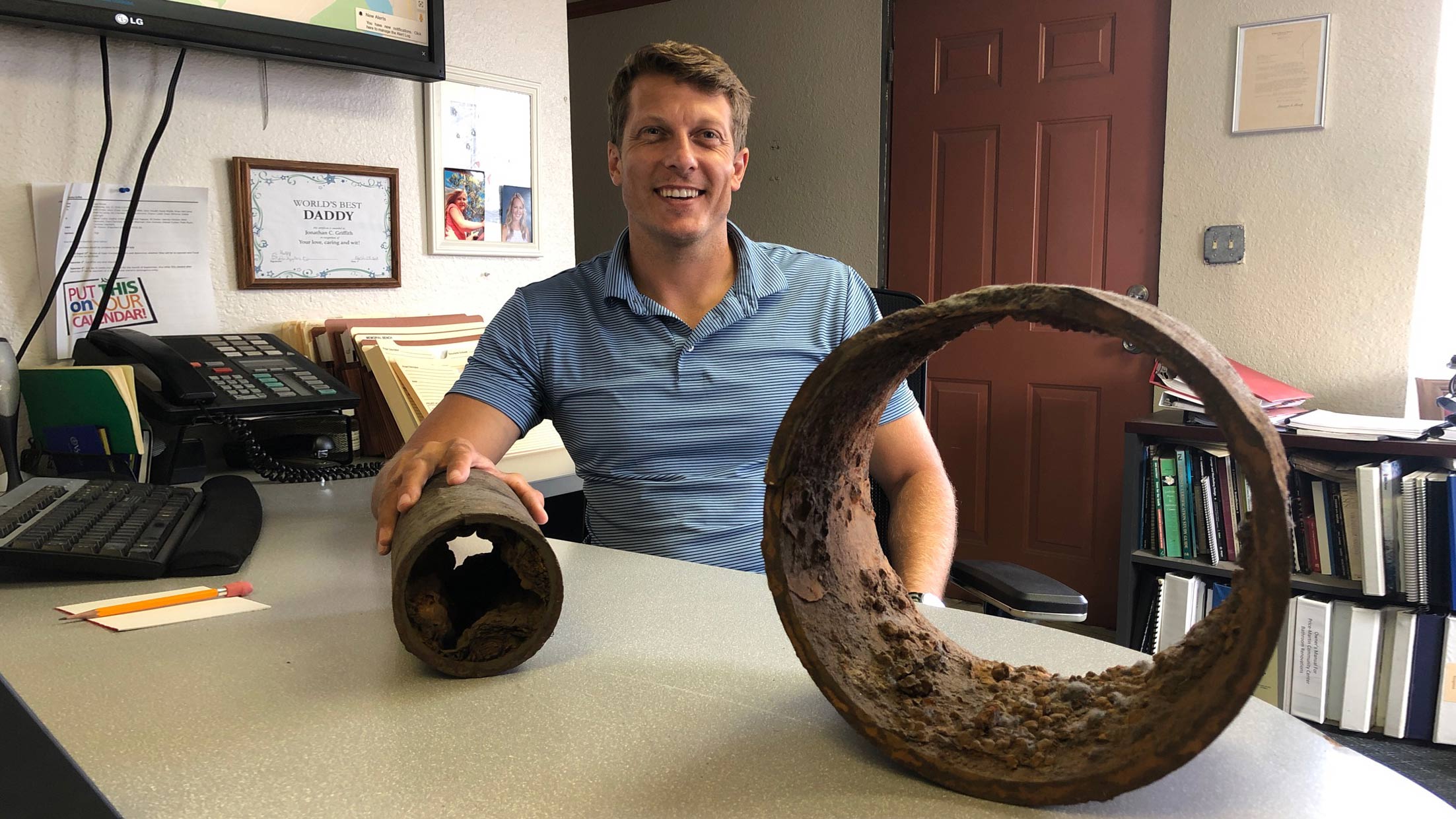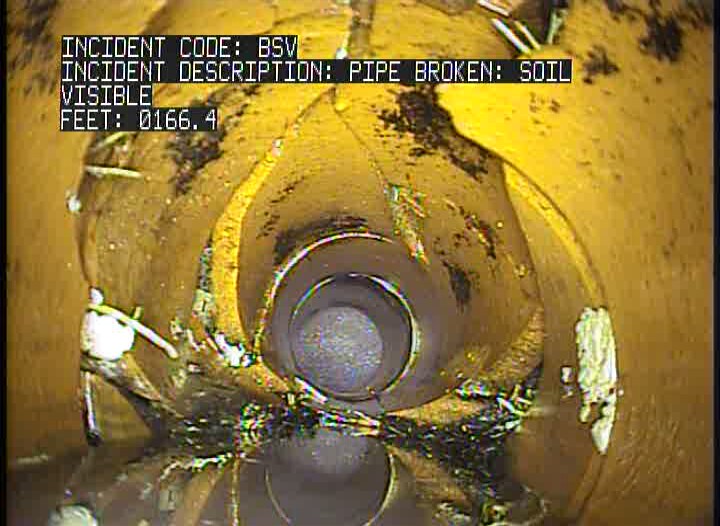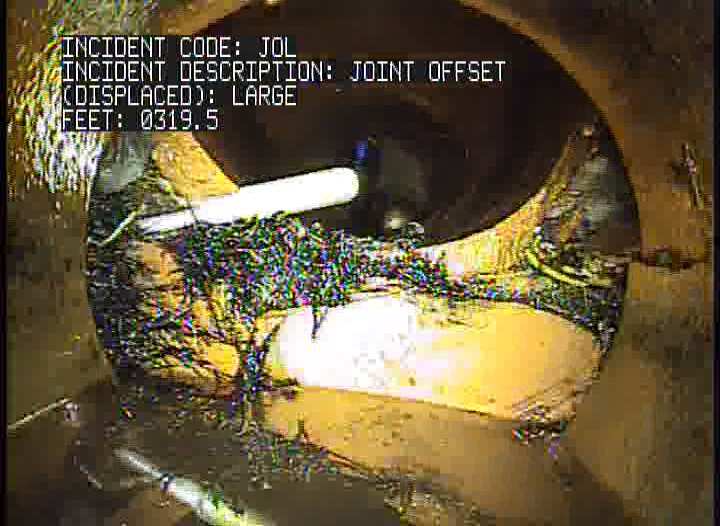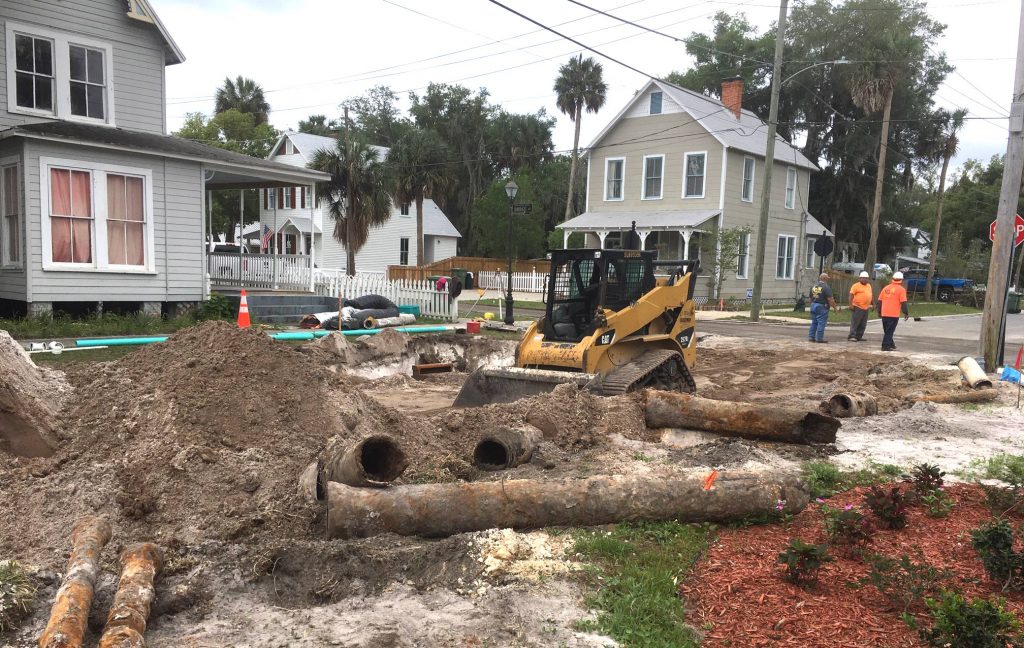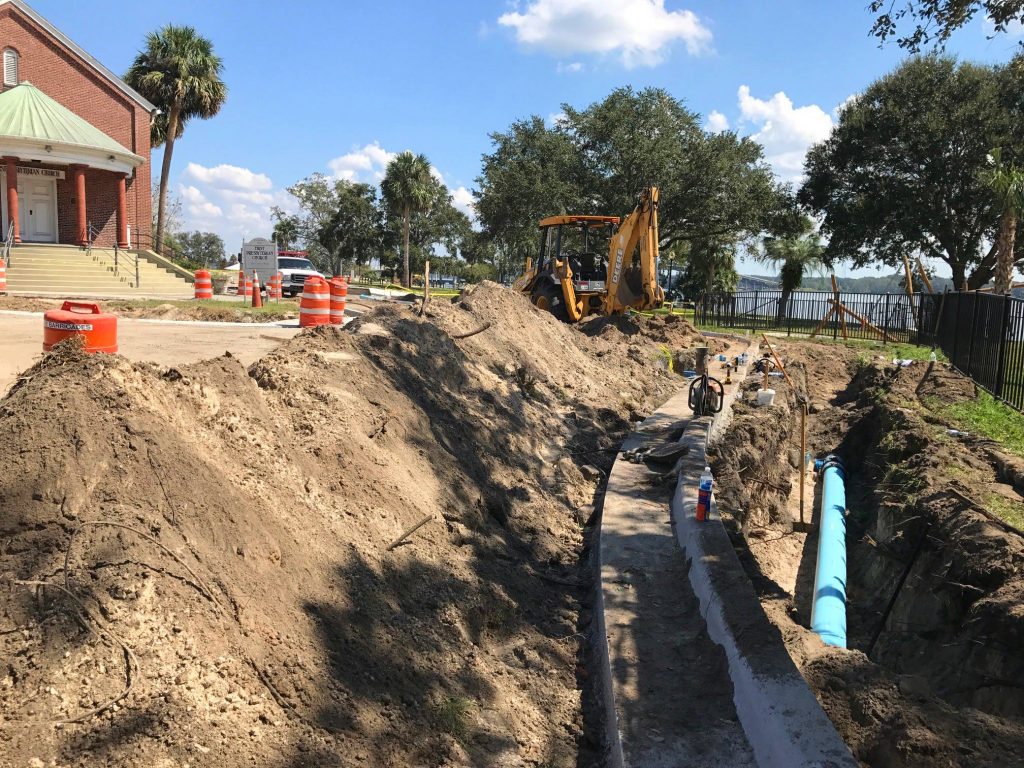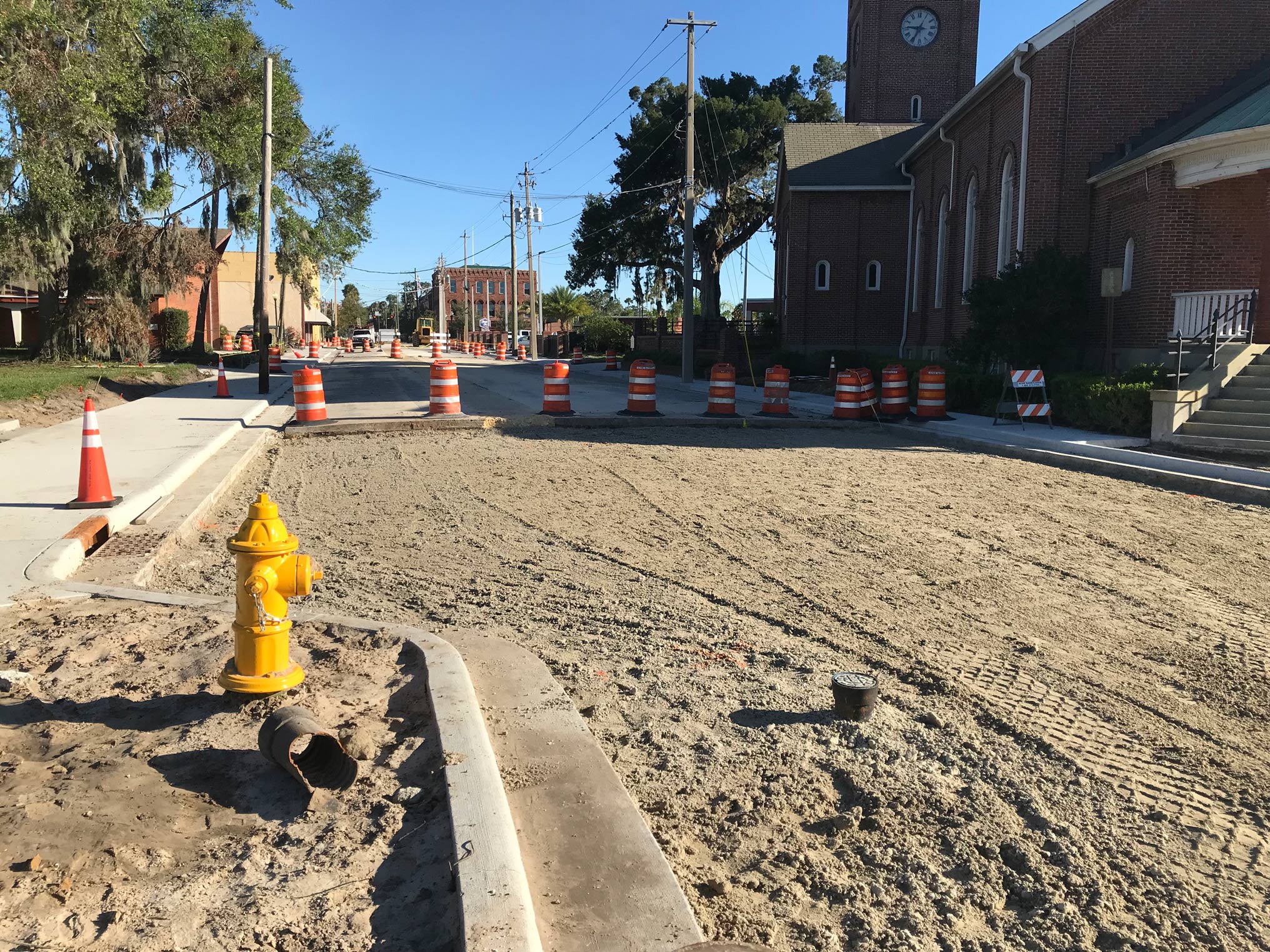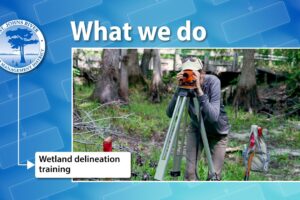Ancient pipes of iron and clay:
A tale of two REDI projects
Palatka General Services Director Jonathan Griffith displays a piece of cast-iron pipe in his office dated 1886. It’s not just an oversized paperweight with an “oh wow” factor; it’s a reminder of the challenge that this small north Florida city has faced in ushering its municipal water service into the 21st century.
Founded in 1821, Palatka grew from a bustling trading post on the St. Johns River to become the county seat of Putnam County. Today, the city maintains its historic provenance — a downtown defined by stately brick buildings and neighborhood streets lined with charming wood-framed homes — but much of its infrastructure is just as old.
“We’ve estimated that approximately 66 miles of our water lines are past their useful life,” Griffith says. “We have pipes that predate the 1900s and a neighborhood known as Palatka Heights where the cast-iron pipes date to the 1940s and ‘50s.”
The aging water lines are more than just a burden on the city’s Public Works operations and maintenance budget; customers contend at times with rusty or cloudy water and inconsistent water supply, Griffith says.
The city began its latest initiative to replace its municipal water lines four years ago, thanks to its partnership with the St. Johns River Water Management District. Since 2016, the District has awarded the city $2 million in Rural Economic Development Initiative (REDI) and Innovative Cost-Share funding toward four phases of upgrades to Palatka’s municipal water system.
Established by the Florida Department of Economic Opportunity, the REDI program targets economically disadvantaged communities. Eligible communities can receive a waiver or reduction in the match normally required to receive District cost-share funds.
Since 2017, the District has provided more than $15 million in REDI funding for 36 water supply, flood protection and water quality projects that have enabled disadvantaged communities to upgrade their water or sewer systems, improve their flood control capacities and capture stormwater that once flowed into local water bodies.
St. Johns River Water Management District Executive Director Dr. Ann Shortelle says the REDI program is the perfect example of how government grants can benefit both people and the state’s water resources.
“As a REDI community, Palatka relies on grant funding for projects that wouldn’t get done otherwise,” Shortelle says. “Our District headquarters is in Palatka, and we’re grateful to collaborate on projects that have improved water quality for the city’s residents and increase the efficiency of the utility’s municipal water system by eliminating miles of leaking pipes.”
Through the REDI program, Palatka has replaced or scheduled for replacement about 18 miles of water lines with more phases planned, Griffith says.
“As a community, being able to offer well-planned, cost effective and environmentally sustainable infrastructure and services is paramount,” Griffith says. “Thanks to our partnership with St. Johns River Water Management District, we’re finally gaining traction.”
Additionally, the city can oftentimes upgrade other infrastructure, such as roads and stormwater ponds, while replacing water lines. Such upgrades increase property values and can potentially lure new business and residents to the city, Griffith says.
The simple act of replacing ancient, leaky pipes can benefit Public Works’ operational and maintenance costs exponentially — and also its rate payers.
“We are permitted for a limited amount of water (through the District’s Consumptive Use Permitting program),” Griffith says. “By correcting the inefficiencies in our distribution system, we can invest more into rehabilitation and expansion.”
Flagler Beach is another city that has taken advantage of the District’s REDI program in recent years. One project, since completed, has reduced street flooding via the installation of roadside swales that capture stormwater that once flowed through the streets, untreated to the Matanzas River.
“We’re an island,” says Fred Griffith, the city’s public works director (and no relation to Jonathan Griffith). “We get intense storms that flood the streets. The water flows down the streets, east to west, like a ladder to the river. The street swale project has allowed us to protect our city streets from the detrimental effects of standing water, increase aquifer recharge, and to help preserve property values in the protection of existing homes from future flooding events.”
More recently, the city has wrapped up the first phase of a two-phase project to install 7.5 miles of slip lining inside its old clay pipe sewer system. Fred Griffith describes the slip-lining process as using steam to push a sleeve resembling an inverted balloon into a section of pipe and allowing it to harden, thereby creating a pipe lining inside the old pipe.
“We have about 22 miles of clay sewer pipes that were installed in the 1970,” he says. “Due to their age, they allow stormwater to infiltrate and overwhelm our wastewater system, including our lift stations and to challenge our treatment plant capacity.”
When the sewer treatment system is overtaxed by the influx of stormwater, treatment tanks can overtop and release partially treated effluent into the nearby Matanzas River. This slip lining project is estimated to reduce annual nutrient loading into the Matanzas River by approximately 536 pounds of nitrogen and 438 pounds of phosphorus.
“The inflow of stormwater into our wastewater system also raises salinity levels and shortens the life of our lift station impellors (part of the pumping mechanism),” Fred Griffith says. “The higher salinity concentrations we receive from the infiltrating water means we are receiving wastewater at the treatment plant that is higher in chlorides than it should be. Slip lining the old pipes prevents this from occurring. Due to the financial assistance that the District has provided, we’ve been able to reduce and control our inflow and infiltration to less than 20 percent citywide.”
The District’s REDI cost-share program provided $500,000 toward the $750,000 project.
“We really appreciate the St. Johns River Water Management District,” he says. “They’ve been really good to the city of Flagler Beach.”
Shortelle praised the Flagler Beach slip lining project as a boon to the residents and the environment, illustrating the impacts REDI funds can have on qualifying communities.
“Over the past several years, we’ve provided financial assistance through the REDI Program to the city of Flagler Beach on critical projects that not only improve the quality of life for its residents but lessen the city’s environmental impacts on the Matanzas River,” Shortelle says. “Such projects are increasingly important as more people move to Florida.”


